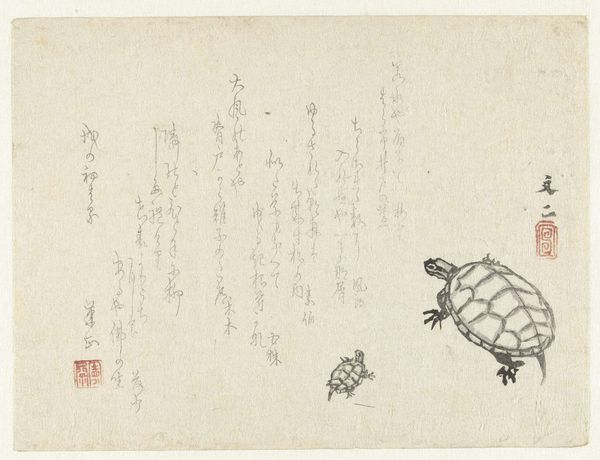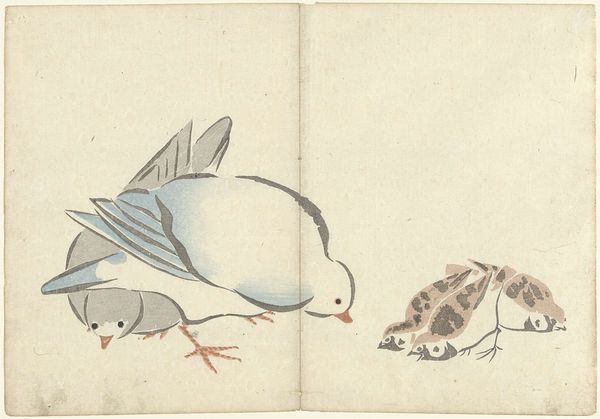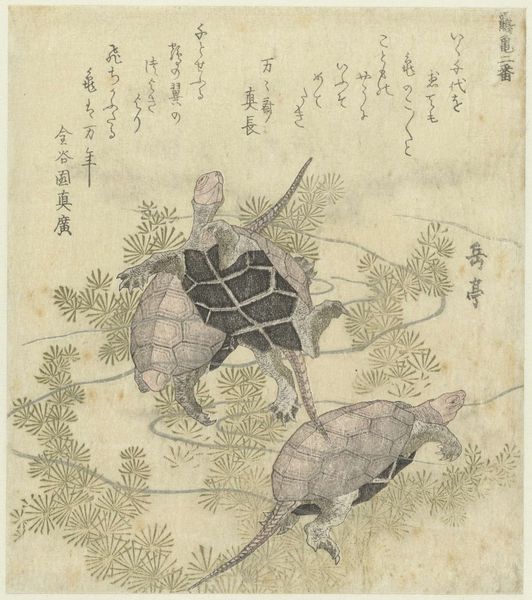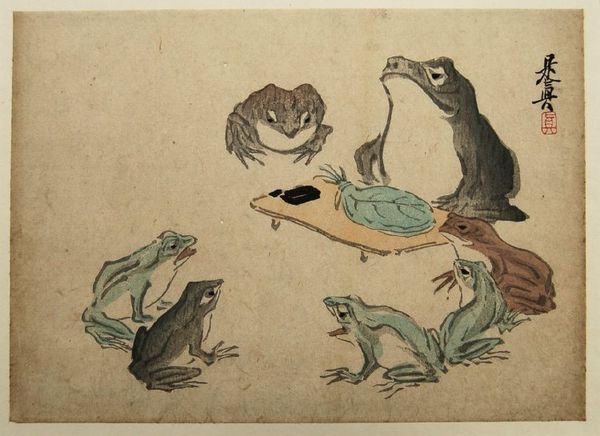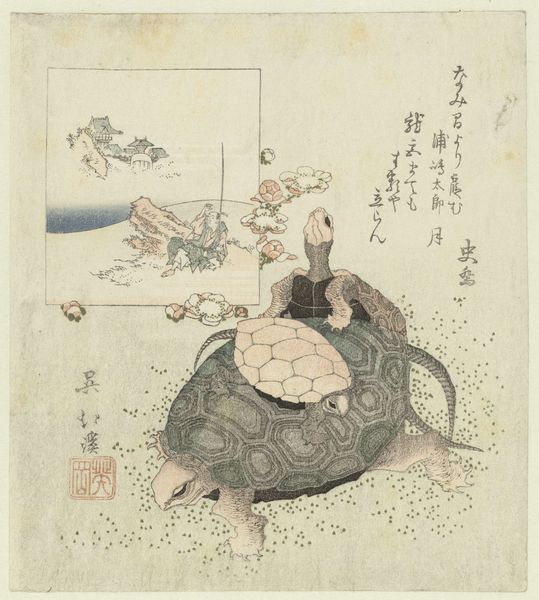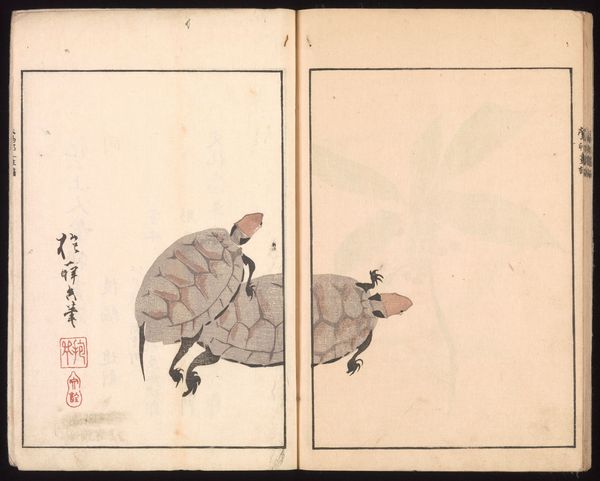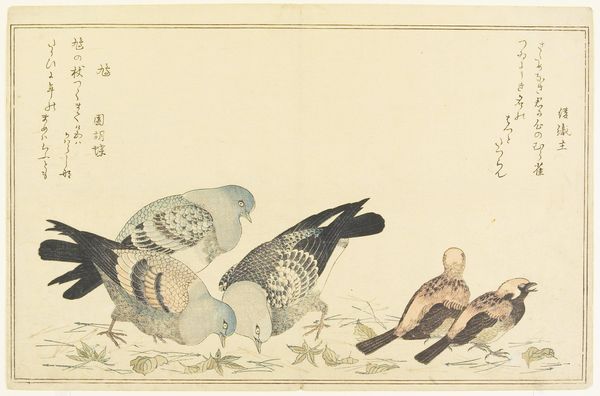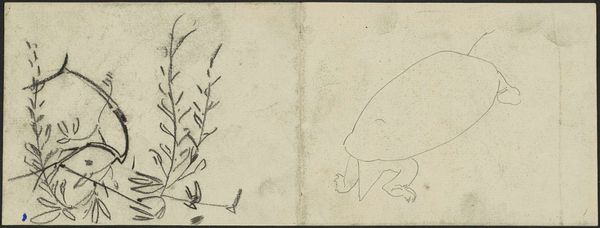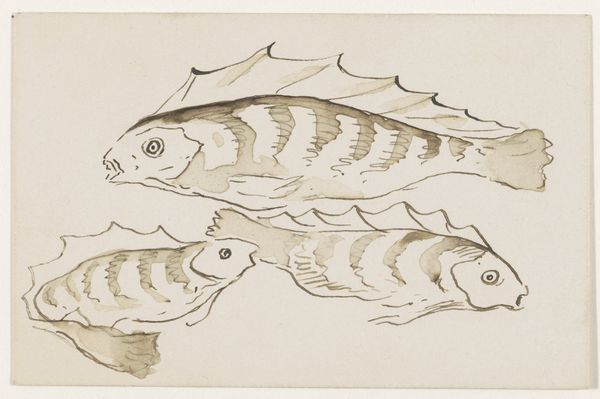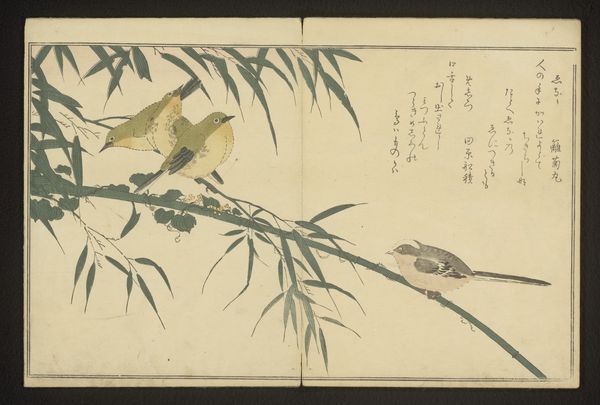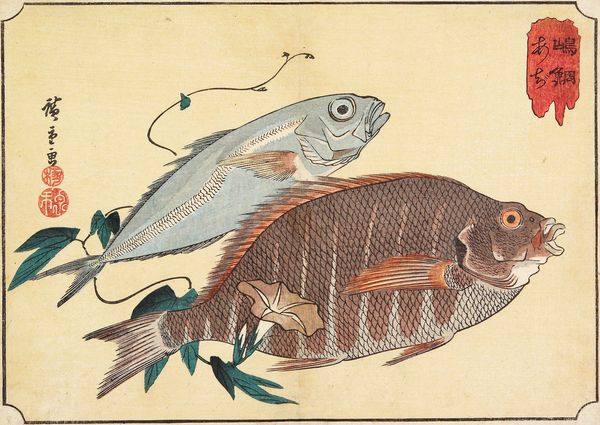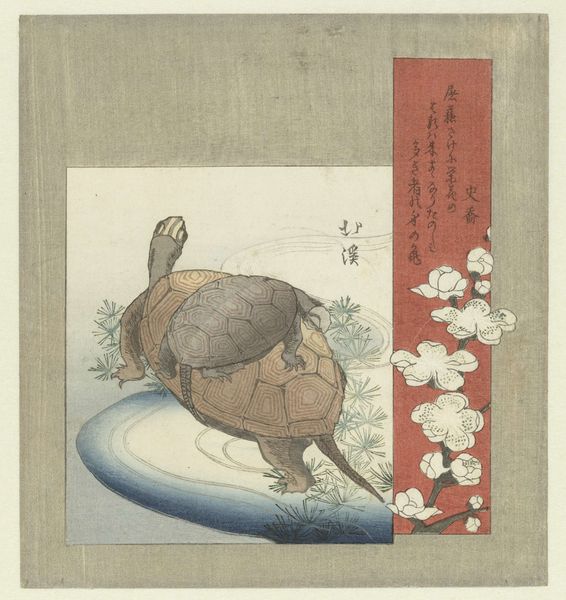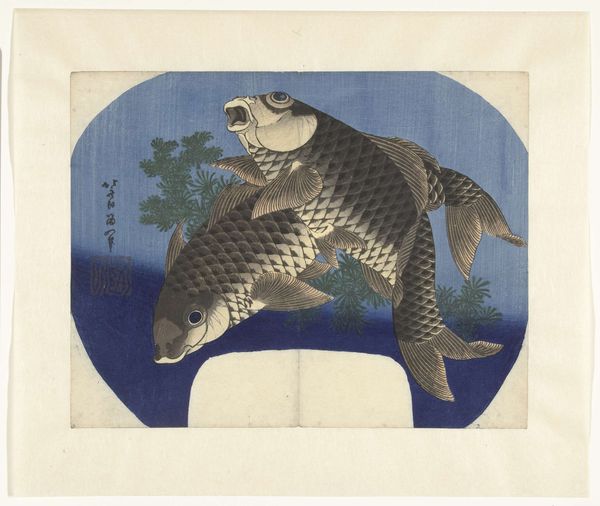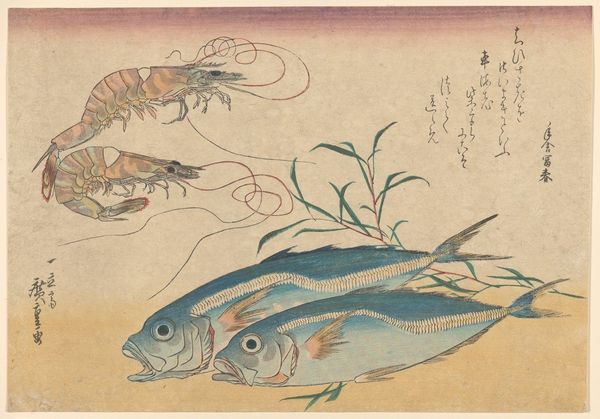
drawing, ink
#
drawing
#
animal
#
asian-art
#
ukiyo-e
#
figuration
#
ink
#
line
Dimensions: height 256 mm, width 368 mm
Copyright: Rijks Museum: Open Domain
Curator: This is "Drie schildpadden," or "Three Turtles," a drawing completed in 1826 by Nakamura Hōchū. It's rendered in ink, very much within the Ukiyo-e tradition. Editor: It strikes me as very calming. The pale tones and the careful line work create a sense of serene observation, a contemplative study of these creatures. Curator: Hōchū was really pushing against the established schools of art in his time. He embraced a more naturalistic style, evident here in the depiction of these turtles. But it also seems pertinent to the tradition of craftsmanship he came from—I mean, Ukiyo-e was not seen as high art. It's inherently tied to production, printing, circulation. It brings an interesting tension between commodity and high aesthetic sensibility. Editor: Absolutely. And those subtle gradations of ink wash give volume and texture to the turtle shells. They pull my eye around the composition. Curator: The turtle is, of course, a loaded symbol, across cultures really. It speaks to longevity, wisdom, stability... But here, I am wondering, how do these animals become subject and symbol within this moment of rapid urbanization in Japanese society? What did these animals mean for the artist in an environment deeply impacted by economic development and how does Ukiyo-e disseminate these views through material culture? Editor: Perhaps that very simplicity becomes part of the appeal. The pared-down form invites projection. The lack of elaborate detail allows the viewer to imbue them with their own meaning. In that sense, its form dictates its purpose. Curator: That's a valuable reading, and that invites another view point as well... In what kind of contexts this drawing was appreciated and acquired? Were the purchasers members of a new, burgeoning merchant class that were more keen to experience a break from established forms? Editor: Fascinating questions that circle back to the context. It seems to me that these quiet turtles contain far more within their shells than initially meets the eye. Curator: Indeed, its seeming simplicity belies layers of social and historical meanings that we are uncovering to this day.
Comments
No comments
Be the first to comment and join the conversation on the ultimate creative platform.
